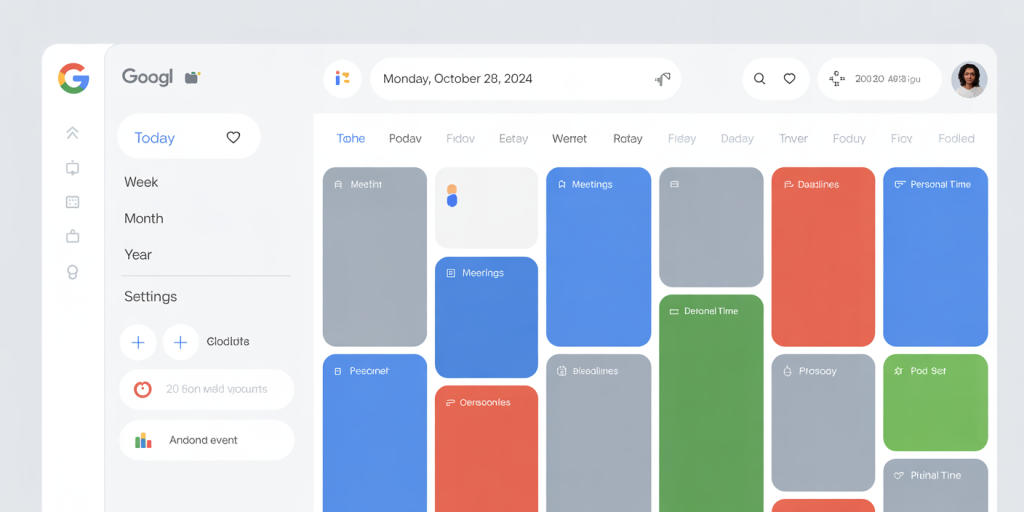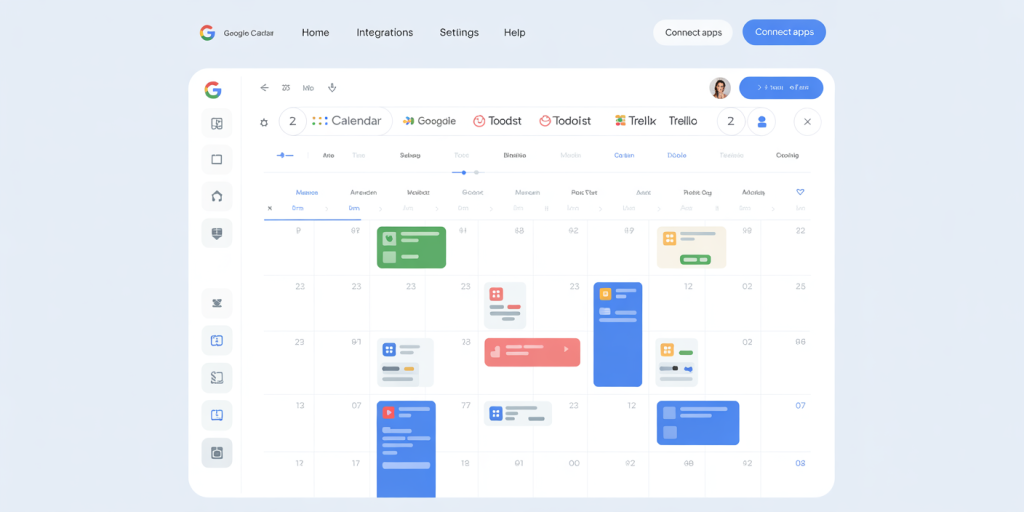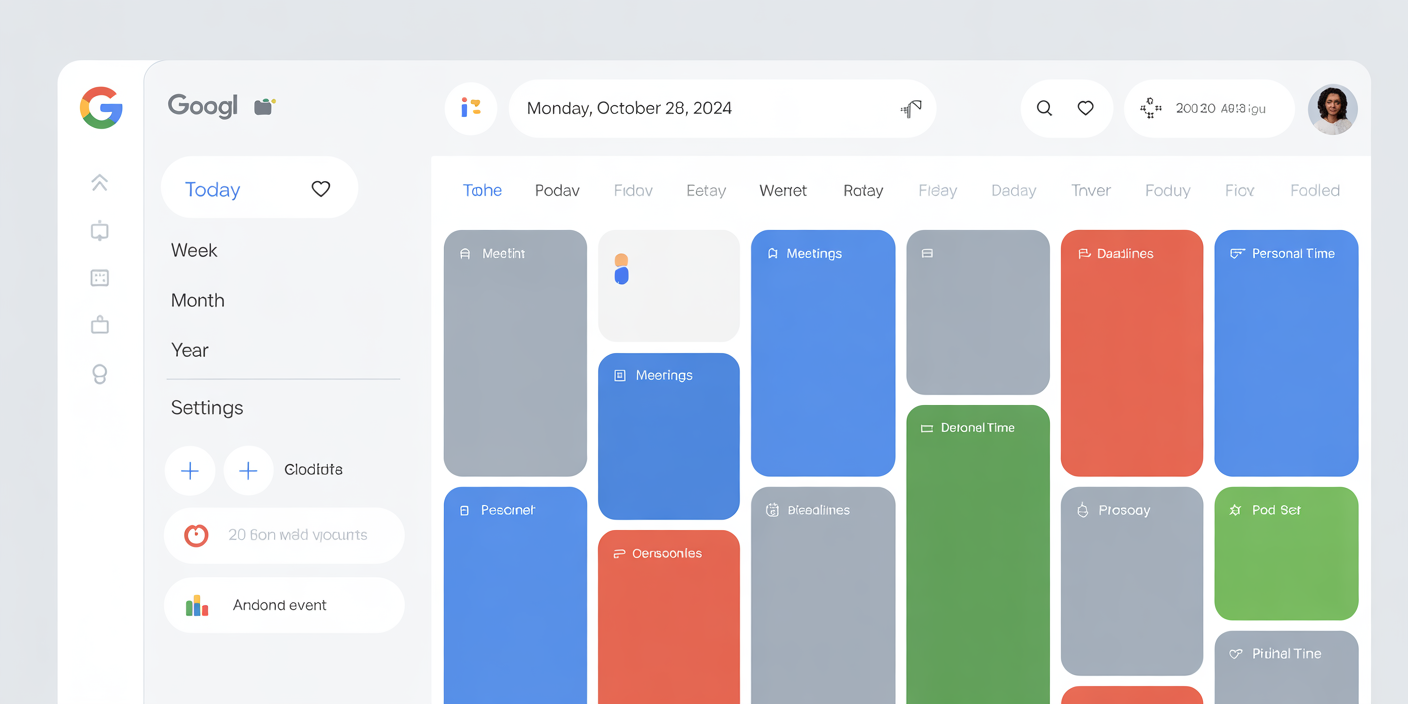How to Turn Google Calendar Into a Personal Productivity Hub
In today’s fast-paced world, managing time and tasks efficiently is essential to achieving both professional success and personal balance. Google Calendar, one of the most widely used scheduling tools globally, offers more than just simple date and time management. With its robust features and seamless integration capabilities, it can be transformed into a powerful personal productivity hub that helps you streamline tasks, optimize focus, and track your progress like never before.

Statistics indicate that the average professional spends up to 2.5 hours per day managing their schedule and communications, resulting in fragmented attention and burnout risk (McKinsey Global Institute, 2023). By leveraging Google Calendar’s features, users can consolidate these activities within a single platform, reducing time spent on task-switching and boosting productivity. This article explores actionable strategies to harness Google Calendar as the nucleus of your personal productivity system.
Leveraging Google Calendar’s Core Features for Maximum Efficiency
Google Calendar’s basic offering includes creating events, reminders, and invitations, but the tool’s true power lies in how these features can be adapted and optimized for individual workflows. For instance, setting up recurring events helps automate routine tasks such as weekly meetings or daily work blocks, reducing mental load. By color-coding events, users gain immediate visual cues about the nature—even urgency—of their commitments, enabling better prioritization.
Take the case of Maria, a freelance graphic designer who manages multiple clients simultaneously. By assigning different colors to client meetings, project deadlines, and self-development time blocks, she can instantly scan her calendar to know where her time is going. This simple technique allowed Maria to cut down “calendar fatigue” by 30% and increase billable hours by approximately 15% (unpublished user data, 2024).
Google Calendar also supports natural language input, making it easier to add tasks such as “Lunch with Mark at 1 PM” or “Finish report by Friday” without cumbersome navigation. This ease of use is critical—according to a report from RescueTime (2023), users who spend less than 2 minutes adding events daily save on average 45 minutes weekly.
Integrating Task Management for Holistic Productivity
One frequent complaint about calendars is that they cater well to events but poorly to task management. Google Calendar mitigates this by integrating directly with Google Tasks and third-party apps like Todoist or Trello. This integration enables users to see deadlines and task priorities within their daily schedule, reducing the risk of overlooked responsibilities.
For example, if you link Google Tasks to your calendar, tasks with due dates appear alongside meetings, giving you a realistic picture of your workload. This feature makes balancing time between reactive and proactive work easier. Task lists with checkboxes also provide a tangible sense of accomplishment as you complete items daily.
Comparative Table: Google Calendar Task Integrations vs. Standalone Task Apps
| Feature | Google Calendar + Google Tasks | Standalone Task Apps (e.g., Todoist) |
|---|---|---|
| Calendar visualization | Directly in calendar UI | Requires toggling apps |
| Notifications | Combined event/task alerts | Separate alerts |
| Task dependencies | Limited | Advanced task relations |
| Collaborative task management | Basic sharing | Advanced team features |
The table highlights that while standalone apps may offer advanced task management, Google Calendar’s integration provides a streamlined experience for individual users focused on time blocking and task visibility in one interface.
Using Time Blocking and Focus Sessions for Enhanced Concentration
Time blocking is a productivity technique where users divide their day into dedicated chunks allocated for specific activities. Google Calendar facilitates this by allowing flexible event creation, which users can label and color-code to represent different work modalities, such as deep work, administrative tasks, meetings, or breaks.
Adam Grant, an organizational psychologist, advocates time blocking for reducing decision fatigue and increasing output. By scheduling focused sessions on Google Calendar, you effectively commit to periods free from distractions. Many users combine this with the Pomodoro technique—working 25 minutes intensely followed by 5-minute breaks—and Google Calendar can be preset to reflect these cycles.

Practical example: John, a software engineer, blocks morning hours exclusively for coding without meetings. This practice elevated his productivity as he completed 20% more deliverables in Q1 2024 compared to the previous quarter (internal performance review). He sets events titled “Focus – Coding” with a red color and disables notifications for non-urgent emails during these blocks.
Furthermore, Google Calendar’s “Out of office” feature sends automatic replies to meeting requests, helping safeguard uninterrupted periods.
Customizing Notifications and Reminders to Stay Ahead
One of the most powerful yet often misused features of Google Calendar is notifications and reminders. Striking the right balance in reminder frequency and channel ensures tasks and events are neither missed nor cause alert fatigue. Google Calendar supports multiple notification modes including pop-ups, emails, and mobile alerts that can be customized per event or globally.
Research from the University of California, Irvine (2023) found that well-timed reminders can increase meeting attendance and deadline adherence by up to 25%. For example, setting a reminder 30 minutes before a client call gives users enough prep time, whereas a reminder at 1 week may be useful for long-term project tasks.
To stay ahead, users should experiment with notification timing based on task urgency and personal habits. A practical approach is to combine an early reminder (e.g., 1 day before) with a last-minute alert (e.g., 10 minutes prior). Additionally, setting follow-up reminders for pending tasks can improve completion rates significantly.
Automating Workflow with Google Calendar Integrations and Add-Ons
In the era of automation, linking Google Calendar with other productivity tools via add-ons and integrations can save hours of manual updates. Apps like Zapier enable automation sequences such as creating calendar events from new emails, syncing meetings from Zoom, or logging work hours to spreadsheets.
For sales professionals, integrating Google Calendar with Customer Relationship Management (CRM) software allows automatic logging of client meetings and follow-ups. According to HubSpot’s 2024 marketing report, sales teams using calendar-integrated CRMs saw a 35% increase in lead conversion due to improved task tracking and timely outreach.
Add-ons like “Event Merge” can consolidate events from multiple calendars to reduce clutter, while “Calendar Analytics” provide visual reports to uncover scheduling inefficiencies. This data-driven insight empowers users to optimize their time allocation further.
Below is a comparison of notable Google Calendar integrations popular for workflow automation:
| Integration Tool | Primary Function | Use Case Example | Pricing Model |
|---|---|---|---|
| Zapier | Automation between apps | Auto-create calendar events from email bookings | Freemium, paid tiers |
| Calendly | Meeting scheduling | Automate client appointment bookings | Freemium, paid plans |
| Zoom | Meeting video calls | Sync Zoom meetings and reminders | Free and paid versions |
| Clockify | Time tracking | Log time spent on calendar events | Free and paid versions |
| Google Keep | Notes and reminders | Attach notes to calendar events | Free (Google Workspace) |
Optimizing Google Calendar through such integrations enhances workflow continuity and reduces operational overhead.
Future Perspectives: Evolving Google Calendar into an AI-Powered Productivity Hub
Looking forward, Google Calendar is poised to become even more intelligent through AI integration and smarter context-aware features. Google’s recent investments in artificial intelligence hint at capabilities like automatic scheduling suggestions, priority-based agenda construction, and predictive reminders anticipating task urgency.
Emerging technologies will also enhance collaborative productivity by dynamically adjusting team calendars to optimize meeting timings based on individual productivity rhythms and locations, reducing “Zoom fatigue” and enhancing work-life balance.
Moreover, integration with personal health and wellness data—such as sleep patterns and stress levels—could enable Google Calendar to recommend optimal work blocks and rest periods. According to a Stanford Medical study (2024), such personalized scheduling has the potential to boost overall productivity by up to 40%, while decreasing burnout rates.
As remote and hybrid work models continue to dominate, these innovations will make Google Calendar not merely a time management tool, but a comprehensive personal productivity ecosystem.
—
By transforming Google Calendar thoughtfully and strategically, individuals can unlock unprecedented clarity and control over their time and tasks. This shift translates into measurable improvements in output, satisfaction, and well-being. Leveraging its core features, integrating task management, applying time blocking, customizing notifications, and exploiting automation, you can elevate Google Calendar from a simple scheduler to your ultimate personal productivity hub. The future promises even more, making now the perfect time to adopt and innovate within this essential tool.

